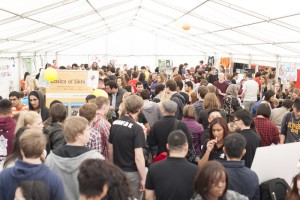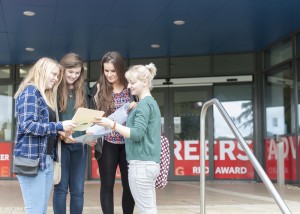On May 3, two MA TESOL students in the Department, Akihiro Matsuura and Chiho Takeda, were awarded the opportunity to conduct their dissertation research under the supervision of the British Council Assessment Group as part of the Department’s longstanding collaboration with the British Council. The awards were presented at one of our Applied Linguistics Research Circle Weekly Talks, where Prof Barry O’Sullivan, Head of Assessment Research and Development at the British Council gave a talk on the future of language assessment. Here, the two students reflect on the opportunity that they have earned.
Akihiro Matsuura
I am Akihiro Matsuura from Japan, a MA TESOL student at the University of Reading. I am so honoured to have met the British Council Assessment Research Group both in person and online. I also realise again that I have been awarded this precious research opportunity. The ceremony had a sobering effect on me so that I became even more motivated and more responsible at the same time. Arigatou-gozaimasu (means “Thank you so much.” in Japanese) for organising this event for us.
This research opportunity has inevitably brought me considerable interest and enthusiasm. This is because the main area I am interested in is second language speaking assessment. In Japan, enhancing English learners’ speaking ability is highly required especially in the environment for English education due to implementing a new course of study. However, I wonder how the elements measured by speaking tests differ from the skills required in real life, and how they could be improved. These questions have arisen from my own experiences both as an interviewer for the EIKEN (English Proficiency Test in Japan) and as an English teacher.
Thanks to both Professor Parvaneh Tavakoli from the University of Reading and Richard Spiby from the British Council, my initial topic focused on fluency measurements in speaking tests through a module ‘Language Testing Principles’ in the spring term. Then, my supervisor, Sheryl Cooke from the British Council, always encourages me to keep improving my research topic, which has been making great progress in repair fluency. Moreover, Barry’s talk at the ALRC Weekly Talk sounds very fascinating and suggests that fluency will be a key point in the AI scoring model, which can be a cynosure in the language testing field in future.
My research will investigate constructs of repair fluency across different degrees of proficiency and four semi-direct tasks of the Aptis Teen speaking test by replicating the study of Tavakoli et al.(2017). It is interesting indeed for me to focus on the result that there was no clear linear progression through the levels of proficiency in the study of Tavakoli et al.(2017), showing repair fluency is quite a complex process. By doing this research, I would like to find features of repair aspects of fluency across the levels of proficiency, leading to a very useful indicator for teachers of teenagers and for young learners themselves especially in Japan as well as a validation rating scoring for the Aptis for Teens speaking test and speaking rater training.
No one can accomplish anything alone. I am much obliged to all my great classmates, teachers and staff at the University of Reading for helping and enlightening me. I am convinced our research will bear fruit.
Chiho Takeda
I am Chiho Takeda, a MA TESOL student at the University of Reading. I am glad to have a great opportunity to research with members of the British Council for my dissertation. I strongly believe using data from the British council for a dissertation is special for a graduate student. Rodney and Tony, thank you for organizing this ceremony as a part of the University of Reading applied linguistics research circle weekly talks in person.
I would like to introduce my research project supervised by Dr. Emma Bruce, a researcher at British Council. My interest is language writing assessment in Japan. My research aims to investigate the different rating styles and perceptions of Japanese high school teachers and experts of Aptis raters using the Aptis writing test written by Japanese learners. Firstly, this study will compare holistic ratings of ten Aptis-trained raters and ten Japanese English teachers. Both groups will rate 20 Aptis for Teens Part 4 writing tasks using a 10-point holistic scale. Then participants will be asked three reasons for their scoring and three participants from each group will be interviewed to express their perception of sample writings and the rating process.
I believe this research will contribute to Japanese English education to develop reliable and valid writing assessments. It would be helpful for all English teachers who want to conduct English writing tests. In addition, the Japanese are considering introducing new exams to measure test taker productivity, writing, and speaking. The possible rating bias, process, trend, and raters’ characteristics should be clear before the writing assessment introduces to the national examination.
I am deeply thankful to Parveneh and Richard for delivering a great module on Language testing and supporting me to expand my knowledge of the field of language assessment. Finally, I would like to thank all of my professors, teachers, tutors, and classmates, who always inspired and encouraged me. I am sure we can complete our research project successfully.











